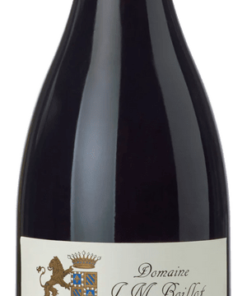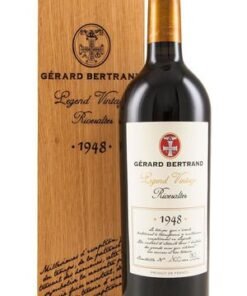1996 | Louis Roederer | Cristal (Magnum) $3,999.99
$3,999.99
Sparkling Wine: 1996 | Louis Roederer | Cristal (Magnum)
A gleaming pale gold color, with a fine foam and an elegant cord of bubbles. It has an eloquent, intense, delicate nose, with almond flavors, and constant fresh white flowers. It has a full, consistent attack, with remarkable balance, near gossamer-like smoothness, and an extraordinary length.
Order from the Largest & Most Trusted Premium Spirits Marketplace!
Featured in
ROLLING STONE
MEN’S JOURNAL
US WEEKLY
NOTICE: Many other small liquor store sites may end up cancelling your order due to the high demand, unavailability or inaccurate inventory counts. We have partnerships consisting of a large network of licensed retailers from within the United States, Europe and across the world ensuring orders are fulfilled.
Producer: Louis Roederer
Ratings: WA | 97 D | 98
Vintage: 1996
Size: 1.5L
ABV: 12%
Varietal: Pinot Noir, Chardonnay
Country/Region: France, Champagne
‘
Detailed Description
A gleaming pale gold color, with a fine foam and an elegant cord of bubbles. It has an eloquent, intense, delicate nose, with almond flavors, and constant fresh white flowers. It has a full, consistent attack, with remarkable balance, near gossamer-like smoothness, and an extraordinary length.
Reviews:
Wine Advocate: Tasted at the IMW Louis Roederer tasting. Disgorged September 2006. A light silvery hue. The bouquet is still firmly in its first stages of evolution but unfurls in the glass, offering notes of clear honey, acacia, a touch of smoke, a hint of white peach and pink grapefruit. Gaining freshness and intensity with aeration. The palate is beautifully balanced with a bewitching sense of symmetry. Elegant and caressing towards the finish with touches of orange-blossom and apricot. Superb length. Wonderful.
Decanter: A dazzling achievement in a tricky year. Emphatic punch of acidity has been moulded into electric energy and thrust, while keeping the saline vinosity. Life changing. Exceptional.
Producer Information
Louis Roederer is a well-regarded Champagne house based in the city of Reims and best-known for its flagship wine: Cristal. The house, established in the late 18th Century, is still family-owned, and produces a house style with equal amounts of Chardonnay and Pinot Noir, around one-fifth Pinot Meunier. Although founded in 1776, the house in its current guise began in 1833, when Louis Roederer took the reins from his uncle and renamed the business for himself. Roederer set out to capture foreign markets, and most famously that of Russia; Roederer became the wine of choice for the Russian royal family. Cristal – now one of the region’s top prestige cuvées along with the likes of Dom Pérignon (Moët), Belle Époque (Perrier-Jouet), Comtes de Champagne (Taittinger) or Cuvée Sir Winston Churchill (Pol Roger) – was created for the notoriously paranoid Tsar Alexander II of Russia, who requested the bottle be clear and flat-bottomed to prevent hidden explosives. Louis Roederer acquired several grand cru vineyards in Champagne in 1845 to add to his portfolio. This was unusual for the time as the majority of houses were buying grapes from growers rather than cultivating their own. Today, the Roederer vineyards encompass around 240 hectares (600 acres) of land in the Montagne de Reims, Vallée de la Marne and the Côte des Blancs. By 2012, around 25 percent of the vineyards were managed biodynamically (the 2012 Cristal is made from biodynamically farmed grapes). Cristal is produced in standard and rosé formats (although the latter is rarer). The standard vintage Cristal wine is produced from some of the house’s best vineyard plots and is composed of around 60 percent Pinot Noir and 40 percent Chardonnay. Portions of the blend can also see some time in barrel. Cristal rosé is produced from similar proportions of Pinot Noir and Chardonnay although the Pinot Noir is left on skins for an extended period prior to pressing. Around 20 percent of the wine is also aged in large format oak, giving the resulting wine a light rosé color combined with hints of onion skin. Cristal wines are also released under the Vinothèque label – a combination of late disgorging/extended lees aging and further time in the Louis Roederer cellars in bottle. The Roederer portfolio also includes non-vintage and vintage brut, rosé and blanc de blancs wines. More recently, there has been collaboration between the house and French designer Phillippe Starck to create a Champagne Brut Nature. The house signature tends to be based around the Pinot grapes (Noir and Meunier). Roederer also produces the red and white still wines under the Hommage à Camille labels (often simply referred to as “Camille”), made under the Coteaux Champenois appellation. The red is a Pinot Noir from the Charmont vineyard in Mareuil-sur-Aÿ while the white – a Chardonnay – is made from grapes grown in the Volibarts vineyard in Le Mesnil-sur-Oger.
Above everything else, your timely delivery is the icing on the cake. Thank you for delivering my order on time, my family and I had a great party.



















